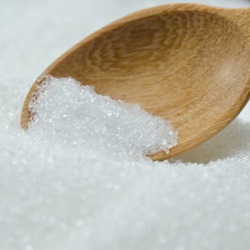Wine Characteristics
There are many ways to describe wine (rich, fruity, zesty, oaky, big), but there are 5 basic profiles defining the characteristics of wine:
- Sweetness
- Acidity
- Tannins
- Alcohol
- Body
Sweetness (Sugar)
The sugar in wine is in the grape juice.

Dry Wines
Some residual sugar 2-8 g/l (grams sugar per liter)
Medium Wines
Residual sugar 8-12 g/l
Sweet Wines
50-200 grams per liter
Dry Wines Most of the wines on the market are dry. A wine becomes dry when the yeast converts all sugar into alcohol during fermentation.
Medium Wines A medium-dry wine tastes a little sweet because the yeast has not converted all sugar into alcohol. Most medium-dry wines are white (Riesling, Moscato) or rosé wines (White Zinfandel).
To make a medium-sweet wine either you remove yeast before it consumes all the sugar, or you add unfermented grape juice (must) to a dry wine.
Sweet Wines Sweet wines can be produced from grapes that are extreme high in sugar (late harvest) or by killing the yeast before it has consumed all the sugar in the grapes.
Sauternes and Ice Wine are sweet wines.
Acidity

High acidity
Medium acidity
Low acidity.
High acidity gives a wine a crisp and fresh taste.
Low-acid wines taste more smooth and round.
Acidity gives a wine a fresh taste. It makes your mouth water.
Acidic wines taste refreshing and crispy.
Low-acid wines taste smooth and round.
In medium (off-dry) and sweet wines, acidity balances the taste of sweetness avoiding unpleasant extra sweet taste (e.g. Riesling).
Acidity does not come from the skins but from the grape juice and ranges from 2.5 to about 4.5 in the PH spectrum.
The most common acids in wine are tartaric acid, malic acid, and citric acid.
Acidity is a key factor in long-term aging, but it is forbidden to add acid during winemaking (it is not forbidden in the New World).
Examples of high acidic wines are: Riesling, Pinot Noir, Chablis, most Italian wines.
Tasting terminology for acidity: crisp, zesty more for white wines, tart more for red wines. Tangy, sharp, tingling, aggressive, mouth-watering.
Acidity in White Wines
| Gewürztraminer | |
| Pinot Gris | |
| Chardonnay | |
| Bordeaux Blanc | |
| Sauvignon Blanc | |
| Riesling | |
| Chablis | |
| Pinot Grigio | |
| Dry Chenin Blanc |
Acidity in Red Wines
| Grenache | |
| Malbec | |
| Rioja | |
| Merlot | |
| Shiraz | |
| Syrah | |
| Gamay | |
| Pinot Noir | |
| Chianti | |
| Sangiovese | |
| Barbaresco | |
| Barbera | |
| Barolo | |
| Chianti | |
| Nebbiolo |
Tannins
Tannins are small bitter particles found in trees and plants.
In wines they come from grape skins, stems, seeds, and oak barrels.
Tannins are present in red wines, almost never in white wines.

High tannins
Bold red wines
Medium tannins
Medium red wines
Low tannins
Light red wines
No tannins
White wines
What do Tannins Taste?
You cannot taste tannins but you can feel them:
Try to chew on: Grape Seeds, Tea Leaves, Walnuts or Banana Skin, and you can feel a dryness in your mouth and a bitterness on your tongue.
Tannins refers to using bark (Latin tannum = oak bark) for tanning animal skin into leather.
Alcohol
High alcohol. Low alcohol.
The majority of wines have between 8-15% alcohol.
| Low Alcohol | Below 11% ABV |
| Medium Alcohol | 11% - 13.9% ABV |
| High Alcohol | 14% ABV and above |
Examples of wines with high alcohol: California and Australia Chardonnay, Amarone, Australian Shiraz, Zinfandel.
Examples of wines with low alcohol: Aperitif Wines, Pinot Grigio, Muscadet, Lambrusco.
Fortified Wines:
| Low Alcohol | 15% - 16.4% ABV |
| Medium Alcohol | 16.5% - 18.4% ABV |
| High Alcohol | 18.5 ABV and above |
Body
Body is a description of how the wine feels in your mouth.
Body is about viscosity and mouth-filling.

Light body
Light as water
Medium body
Light as skimmed milk
Full body
Full as whole milk
Light Body
Light-bodied wines are light as water and easy to drink. In general they have a lower alocohol percentage and a refreshing acidity. Light-bodied wines often served with aperitifs or light food.
Examples: Pinot Noir, Beaujolais.
Full Body
Full-bodied wines have more tannins and are more heavy (mouth-filling). In general they have higher alcohol, more intensity and more tannins.
Full-bodied wines coat your mouth (viscosity) and feel heavy as drinking cream.
Full-body wines are often served with rich and hearthy dishes to create a balance.
Examples: Cabernet Sauvignon, Barolo, Barbaresco.